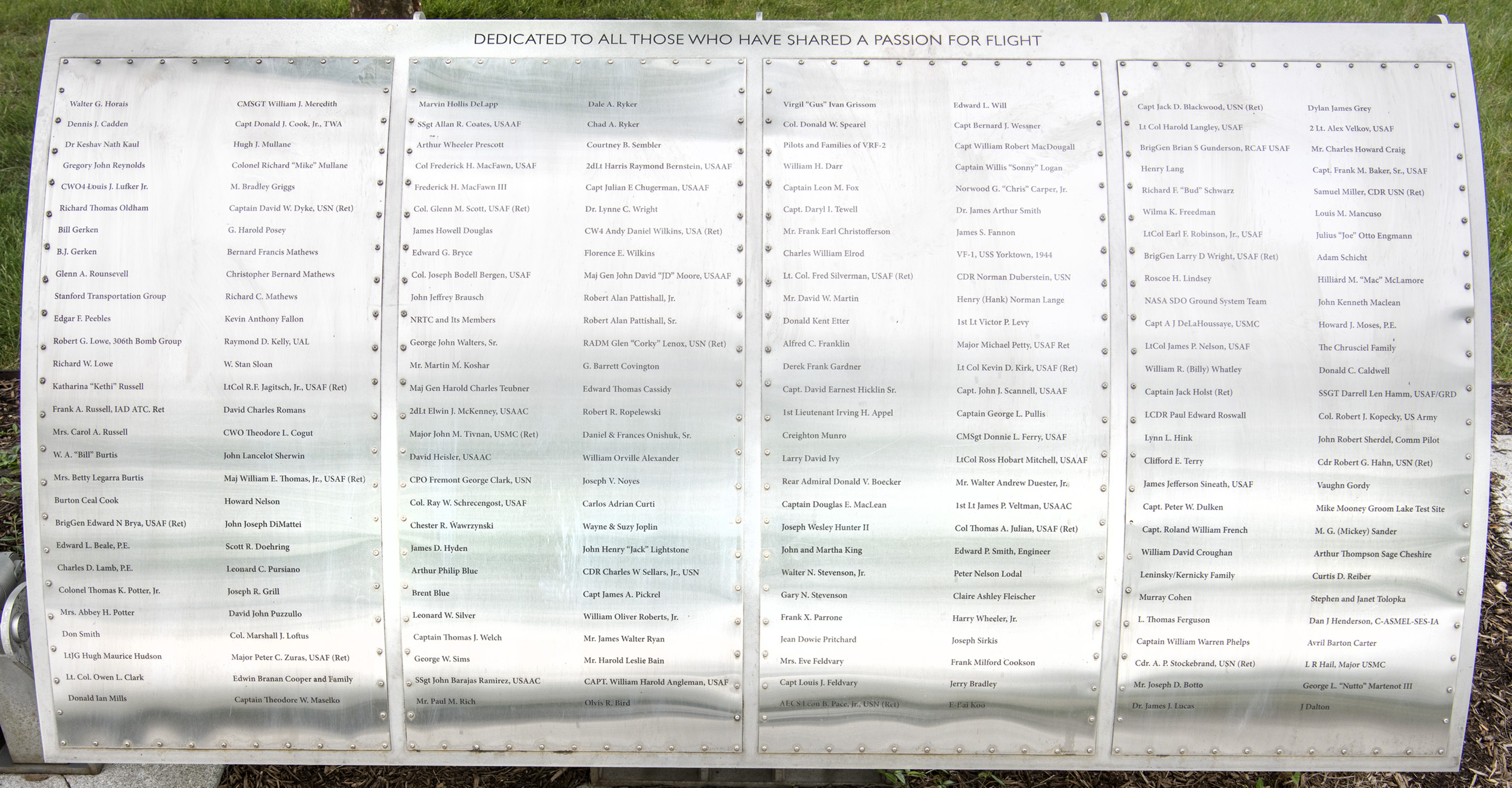Mr. Frank Earl Christofferson

Foil: 28 Panel: 3 Column: 1 Line: 7
Wall of Honor Level: Air and Space Sponsor
Honored by:
Mr. James F. Christofferson
Frank Earl Christofferson (1918-1968) made significant contributions to the history of flight and flight safety. He served as a highly decorated carrier pilot in WWII, then as a test pilot in the early days of military jets, and later as the Director of Flight for McDonnell Aircraft, where he oversaw the development of the famous F4 Phantom. Along the way he helped refine the ejection seat and develop the world's first operational collision avoidance system.
At the start of the war in Europe, he joined the Navy and became a dive-bomber pilot. During training, he survived a mid-air collision by parachute, inspiring his later involvement with ejection seats and collision avoidance systems. He was assigned to the Hornet (CV8), sailing the day after the attack on Pearl Harbor, and witnessed the launch of the Doolittle Raid on Tokyo. He flew the SBD Dauntless in the many combat operations of the Hornet, starting with the decisive Battle of Midway and on until the carrier was sunk in the Battle of Santa Cruz. Ten days before the battle Frank crashed at sea after attacking a Japanese bomber in search of the fleet. He and his tail-gunner were rescued and his next mission was on the morning of the Hornet's final engagement. At the end of 1942 he was assigned to the new carrier Bunker Hill (CV17) and the first squadron to fly Curtis Helldivers. He flew combat missions for the next fourteen months in the Solomons, Gilberts, and Marianas. His 165 consecutive carrier landings without mishap set a record on the Bunker Hill. Frank's next assignment was to the Navy's first group of experimental test pilots, stationed at Patuxent River, Maryland. He flew three test flights a day almost continuously for the next 15 months, until June 1945. During this period he became the 27th Naval aviator to fly a jet, the Bell YP-59A. Frank then joined the Ames Aeronautical Laboratory at Moffet Field, a part of an agency that later became NASA. For the next 18 months he tested a variety of aircraft, including P-51 Mustangs, F6F Bearcats, P38 Lightnings, and F4U Corsairs. In 1947 he joined Glen L. Martin Co. as a test pilot and became the chief of the test section for the XB-51, a jet fighter-bomber in competition with the Boeing B-47. It incorporated several innovations, including variable incidence wings, a T-tail design and a tail-mounted jet. Frank then joined Northrup as chief test pilot for the F-89 spin program in 1951, and in 1955 he moved to McDonnell Aircraft as Director of Flight. Frank's strategy for flight test organization, in which the engineers answered to pilots and not the other way around, was unusual at the time and considered highly successful.
Early in 1968, patent 3,369,239 was issued for an "Air Traffic Control and Monitoring System", naming Frank as one of five co-inventors. The implementation was known within McDonnell as EROS (Eliminate Range Zero System) and was used effectively by McDonnell test pilots throughout the 1960's and 1970's. Frank lobbied the FAA to proliferate the system throughout the commercial airline industry until his death at age 49 on March 27, 1968 from an aneurysm. He posthumously received the 1967 Monsanto Safety Award for his contributions to flight safety.
Wall of Honor profiles are provided by the honoree or the donor who added their name to the Wall of Honor. The Museum cannot validate all facts contained in the profiles.
Foil: 28
All foil images coming soon.View other foils on our Wall of Honor Flickr Gallery
